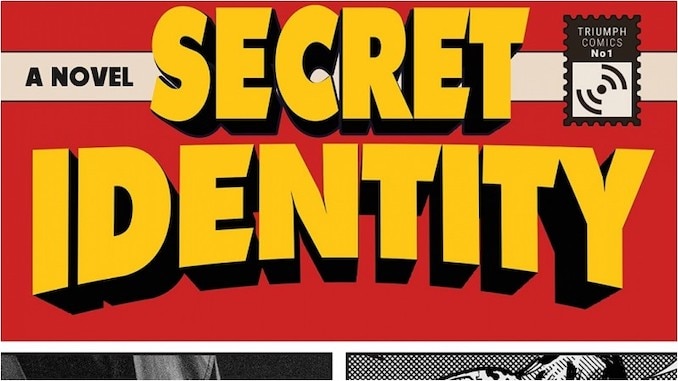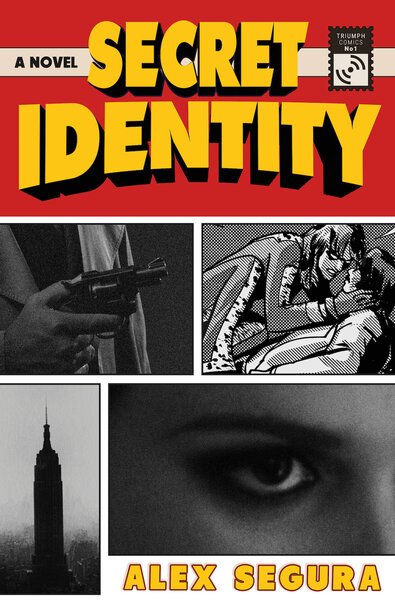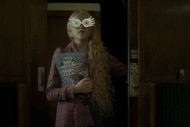Create a free profile to get unlimited access to exclusive videos, sweepstakes, and more!
'Secret Identity' is a must-read love letter to comics' most dangerous era
Alex Segura's latest work is one of the best murder mysteries the genre has ever seen.

It seems like everything Alex Segura has worked on during his wildly diverse career in comics and fiction writing has led him to this moment. His newest work, the novel Secret Identity from Flatiron Books, is a murder-mystery set in the world of comic book publishing in mid-1970s New York City. Its main character is a lesbian Cuban immigrant named Carmen Valdez, who moves from Miami to Manhattan with dreams of writing comics, only to be hampered by the rampant sexism of the times. When the guy with whom she teamed up to ghostwrite her first comic book winds up murdered, Carmen gets embroiled not just in a search for answers, but an attempt to reclaim the character she helped create.
At times Secret Identity reads like a memoir, and with good reason. The author relies on his own experiences growing up in Miami’s Cuban exile community and knowledge of NYC and the comics world to bring his book’s heroine to life. "She grows up reading comics," Segura tells SYFY WIRE during a recent interview. "And her dad basically learned English reading Archie comics and that's how they kind of got a sense of what America was like after coming from Cuba. So it's her dream to write comics."
Segura, the former co-president of Archie Comics and the author of the acclaimed Pete Fernandez crime noir books and the recent Star Wars novel, Poe Dameron: Free Fall, as well as numerous comics series, has combined both of his literary loves — comics and crime — into an irresistible page-turner earning stellar reviews from no less than the New York Times. In many ways, this book is his Born to Run moment, a breakout effort coming at a key juncture in his career that brings it all together.
"This [story] has been kind of percolating since before I even published a book, but I also felt like I wasn't ready to write this novel yet," Segura says. "I needed to get a few books under my belt just to kind of learn the craft. I mean, I wrote five well-received PI novels, and then the Poe Dameron book was like my big-budget movie. Getting the keys to the [Star Wars] franchise was really cool. But it was around book four of the Pete series when I thought, 'Well, maybe my first standalone is gonna be set in comics.' Because I love mysteries that teach you something [where] you learn about an industry."
The story takes place in 1975, which happens to be the same year that Bruce Springsteen released the landmark record referenced earlier. The 1970s, known in fandom as the "Bronze Age," is one of the most fascinating and freewheeling eras in comics history. It was a crucial point when the comics business, much like its epicenter, New York, was teetering on financial ruin.
The halcyon days of the Silver Age were in the rearview; the heroes that Jack Kirby, Stan Lee, Steve Ditko, Don Heck, and others created to make Marvel Comics a powerhouse publisher were now growing up and maturing, and the industry struggled to keep up with changing times and moods. There was no talk of an interconnected movie universe. The best comics fans could hope for in terms of TV or film adaptations were god-awful TV shows like the decade's Spider-Man live-action series, and 1978's Superman: The Movie.
"That was kind of the appeal of setting the story in the '70s... because comics are so pervasive now. Like we have a Peacemaker TV show, we had Loki TV show. This is the stuff you and I would dream of as kids," Segura says. "But back then...comics were dying. You know, the newsstand was failing. Comic shops weren't really starting yet. So there was no path to victory anymore. Comics were something I think creators did before they got to something else or they loved it so much that they wanted to be part of it. People like Paul Levitz, who were super fans and then became part of the industry."
Despite the economic calamity that threatened the industry, a new generation of writers and artists who had grown up as comics fans -- Levitz, Roy Thomas, Denny O'Neil, Gerry Conway, Marv Wolfman, and Len Wein among them -- had started taking over the top books at DC and especially Marvel. Horror books like Werewolf by Night and Tomb of Dracula were being published. Jim Starlin was creating trippy, psychedelic cosmic sagas that would have enormous pop culture impact decades later. And writers like Steve Englehart were injecting counter-culture political commentary into books like Captain America.
Segura taps into this timeline to lace his fictionalized tale with a comics history lesson. Throughout the book, we get a list of name drops that reads like a Who's Who of comics talent -- icons like Lee, Ditko, Kirby, and Infantino, as well as lesser-known names like Bob Brown, Don Newton, and Steve Gerber. The author also mentions a prodigious number of different heroes and comics titles. It's not a flex to show off Segura's comics knowledge, but a way to frame his fictional tale within the confines of actual comic book history.
"I've always had a passion, not just for comics, but for comic book history. You can't really know what you're gonna do unless, you know what came before, like who the drivers were," he says. "I've always loved books that are really strong with verisimilitude where you feel like, well, if I squint, this could have happened. And I've always been fascinated by comic book companies that start really strong and then kind of fade away. Like Charlton or Atlas comics, and even lines like Malibu or the Ultraverse that are these lost libraries of comics."
Through Carmen Valdez, we get to see the roadblocks women faced when they tried to get a foot in the door of the male-dominated comic book industry. Her boss at Triumph Comics, the fictional third-rate competitor to Marvel and DC, has no intention of ever letting her write a comic book. Industry sexism is one of the themes of the book. Real-life comics legends like Trina Robbins, Linda Fite, Marie Severin, and Louise Jones (before she became Louise Simonson) are all mentioned in the book, not by coincidence.
These are all women who made their own specific marks in comics history, despite the adversity they faced, and Segura acknowledges it as part of Carmen's story. "Linda Fite wrote The Cat for Marvel, and you can see kind of echoes of that in the Lynx," he says. "She's not in comics anymore. I tracked her down to talk to for this book, and she was great to me."
Carmen teams up with her friend Harvey, an editor at the company who learns about her writing ambitions. Seeking a co-writer to break out of his creative rut and create a new superhero, the two create the Legendary Lynx. But when Harvey is murdered, Carmen is forced to seek answers on her own, not just to find out who killed her friend, but also to protect the character she co-created. The question of intellectual property is a powerful theme in Secret Identity, appropriate given that it remains a flashpoint even in today's world of creator-owned books and royalties. The story of Bill Finger and the way he was cheated out of his rightful share of credit for his contributions to the Batman mythos is a familiar tale to many comics fans, but as Segura notes, it's far from the only cautionary tale.
"The history of comics is littered with stories of people who signed away their rights or created something and then saw it get taken away from them," he says. "So I felt like that was an echo of a lot of experiences dating back to the Golden Age. I did want it to be just like one specific experience. Because I think there are so many stories like [Bill Finger] in comics. I also wanted to do kind of this low-key commentary on intellectual property and who owns what and creation, ownership and identity, and losing control, all under the umbrella of a murder mystery that's hopefully entertaining."
To burnish the meta factor of Secret Identity, Segura had illustrator Sandy Jarrell create several pages of fully-drawn art (lettered by Taylor Esposito) showing the comic-within-the-novel, The Legendary Lynx. The pages of the Lynx comic offer an interesting sub-text to the greater story. In the novel, the artist who draws the story is Doug Detmer, a gifted artist whose alcoholism has ruined a once-promising career. Segura admits that the Detmer character, like others in the book, is a pastiche of several real-life figures that dot the tragic landscape of comics history.
"There are so many people like that in comics, like super-talented people who just either through their own demons or own personalities just couldn't achieve the stardom that others achieved," he says. "All the fictional characters are amalgamations of people in history. So it was just like little threads from different people like that. And I think if you look closely at the book, and you're a big fan, you get an idea of who I was thinking of as I was writing."
The sub-genre of fiction set in the world of comic books is small. The best example is Michael Chabon's classic, The Amazing Adventures of Kavalier and Clay. Part of the greatness of that book lies in the authenticity woven into the story, which came about because the author spent countless hours talking to creators from comics' Golden Age to collect details large and small to inform his story. Segura did the same kind of legwork.
Segura's story references NYC landmarks like CBGB, Umberto's Clam House, and Da Silvano, as well as references aimed squarely at Miami natives like this writer (Galloway Road and Versailles, to name just a few). Fortunately, Segura has an extensive list of contacts dating back to his days doing publicity at DC Comics that he could use for his research.
"I wanted to talk to people that had worked in comics at the time. I talked to [former DC publisher] Paul Levitz a lot and he recommend some people and he was really helpful. Gerry Conway was very giving with his time. We talked for a couple hours and I was like, 'Wow, this guy killed Gwen Stacy and he's like talking to me for my book!,'" he says. "I also wanted to talk to women that had worked in comics at the time to just get a sense of what it was like for them. Louise Simonson was magnificent, she was so giving with her time. Karen Berger started a little later in comics, but I talked to her for a bit. And Laurie Sutton, who worked at the Comics Code Authority before writing a bunch of stuff at Marvel, also gave me a lot of time."
Hopefully Segura kept all his notes, because he's not done yet with the Lynx. He's reportedly signed with Flatiron Books for a sequel to Secret Identity, which would be set in the present day and include many returning characters.
For now, he's content to enjoy publicizing his work. "This feels...different. Like you said, almost a Born to Run moment. It's kind of like everything clicked together and I'm really proud of how it came out."
Secret Identity is available now.































